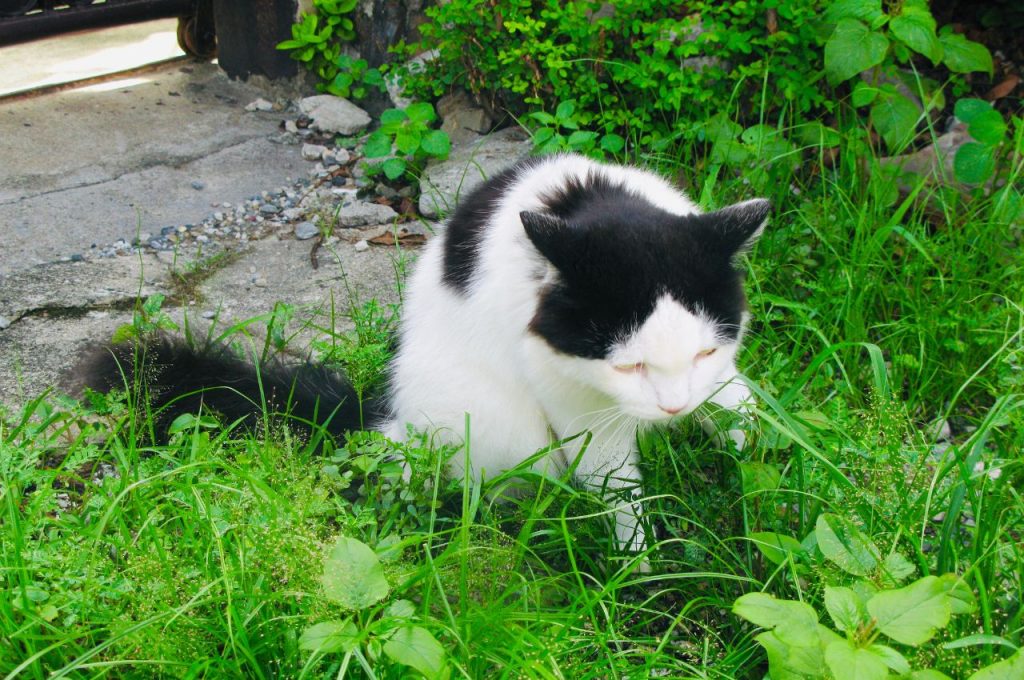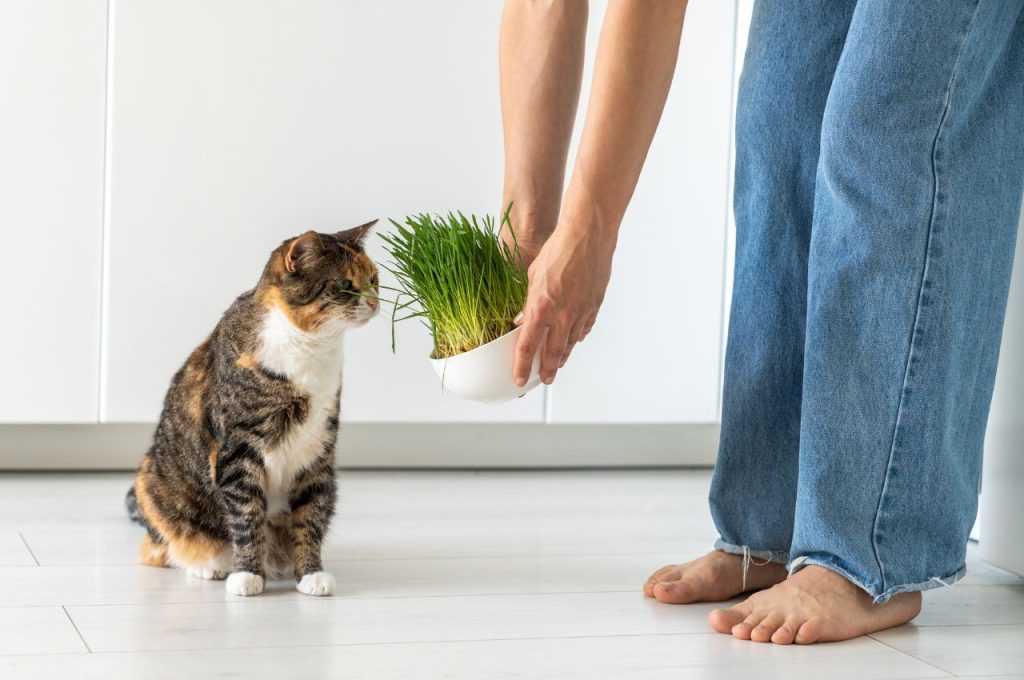To prevent cat hairballs, maintain regular grooming and consider specialized hairball formula food. Provide plenty of water to facilitate digestion and hair passage.
Managing cat hairballs effectively involves a blend of careful grooming and dietary strategy. Owners should prioritize brushing their feline friends regularly, particularly those with long fur, to reduce the amount of hair ingested during self-cleaning. Incorporating a hairball-control cat food into their diet can also promote a healthier digestive process.
Ensuring your cat stays hydrated is crucial, as water helps to move hair through the intestinal tract more smoothly, minimizing those unwelcome hairball surprises. Staying on top of these simple yet vital steps will help to keep your cat comfortable and hairball-free. With consistent care, both you and your furry companion can enjoy a happier, healthier life together.
Understanding The Causes of Cat Hairballs
If you’re a cat owner, you’re likely familiar with the unsightly and somewhat alarming sight of your feline friend coughing up a hairball. These tubular clumps of hair aren’t just unpleasant to find around the house, they can also signal underlying health issues for your cat. To tackle this hairy predicament effectively, it’s critical to understand why hairballs occur in the first place. Delving into the role of grooming habits and shedding factors can help you minimize hairball formation and ensure your cat’s well-being.

The Role of Grooming in Hairball Formation
Grooming is an innate behavior for cats, crucial for their hygiene and comfort. However, it’s also the primary reason for hairball development. As cats lick their fur, tiny hook-like structures on their tongue catch loose hairs, which are then swallowed. While most of this hair passes harmlessly through the digestive system, some can remain in the stomach, leading to hairball formation. Here’s what usually happens during grooming:
- Cats spend a significant portion of their day self-grooming, ensuring their coat stay clean and parasite-free.
- During these grooming sessions, hair is inevitably ingested.
- A healthy digestive system will usually handle this minor ingestion without trouble.
- But sometimes, hair accumulates and compacts in the stomach, forming the dreaded hairball.
Factors that Contribute to Excessive Shedding
While all cats shed to some extent, several factors can exacerbate this natural process, leading to an increased risk of hairball problems:
- Seasonal changes: Cats tend to shed more during certain times of the year, such as spring when they’re losing their winter coat.
- Diet: A diet lacking in essential fatty acids or proper nutrition can result in poor coat health and increase shedding.
- Stress: Just like humans, stressed cats may shed more excessively.
- Health issues: Skin infections, parasites, or other medical conditions can lead to increased shedding.
By understanding the factors that contribute to hairball formation in cats, you can take proactive steps to minimize their occurrence and keep your furry companion happy and healthy. From regular grooming and a balanced diet to addressing underlying health issues and providing ample opportunities for exercise, there are many ways to help prevent hairballs and promote your cat’s overall well-being.
By addressing these basic elements, you pave the way to a more comfortable life for your feline companion, free from the paw-crippling problem of hairballs.
Preventing and Reducing Cat Hairballs
Preventing and Reducing Cat Hairballs can be a challenging aspect of pet ownership, but it is an important one. Hairballs are not only uncomfortable for your furry friend but can also pose a health risk if not managed properly. By implementing a few key practices, you can help your cat maintain its health and happiness. Let’s explore some effective strategies to combat this hairy issue.

Regular Brushing and Grooming
Regular brushing is crucial in the fight against hairballs. By removing loose fur, you decrease the amount your cat ingests during self-cleaning. For long-haired breeds, daily brushing is recommended, while short-haired cats may only require a few sessions per week.
- Choose the right brush: Different coats require different types of brushes or combs.
- Gentle grooming: Use this as a bonding experience, brushing gently to not irritate the skin.
- Desensitization: Gradually get your cat used to brushing, especially if they are initially resistant.
Proper Nutrition and Diet
Feeding your cat the right diet is a foundational step in preventing hairballs. Seek out specialized foods designed to reduce hairballs and improve coat health. These are often high in fiber, which aids digestion and helps hair move through the digestive system more easily.
| Key Ingredient | Benefit |
| Fiber | Facilitates smoother digestion. |
| Omega-3 and 6 Fatty Acids | Improves coat health and reduces shedding. |
Promoting Hydration and Exercise
Ensuring adequate hydration and regular exercise can help prevent the accumulation of hairballs. A well-hydrated and active cat will have a healthier digestive system, which can handle ingested far more effectively.
- Water fountains: Entice your cat to drink more water.
- Wet food: Incorporating wet food into their diet to increase fluid intake.
- Interactive toys: Encourage movement and activity to help maintain a healthy weight and digestion.
Addressing Hairballs in Cats: Treatment and Remedies
Every cat parent has faced the peculiar sounds and sights of their feline friend coughing up a hairball. Hairballs are not only unpleasant for pet owners to deal with, but they can also cause discomfort and potential health risks for your cat. Luckily, with proper care and the right remedies, you can reduce the occurrence of these pesky issues. This segment delves into effective treatments and preventive measures to help manage hairballs in cats.
Hairball Remedies and Products
Several over-the-counter remedies and specialized products can aid in controlling and preventing hairball formation in cats. Products such as lubricant gels, diets formulated for hairball control, and treats infused with fiber can promote the natural passage of hair through the digestive system. Here are some proven solutions:

- Lubricants: These gels ease the elimination of hairballs by coating the swallowed hair, allowing it to move smoothly through the intestines.
- Fiber-rich Foods: A diet with increased fiber supports digestive health. Fiber helps move hair through the gastrointestinal tract more effectively, preventing blockages.
- Supplements: Incorporating supplements containing fatty acids like omega-3 and omega-6 may help improve skin health and reduce excessive shedding.
Consistent grooming is equally essential. Regular brushing reduces the amount of hair your cat ingests while self-grooming. For long-haired breeds, daily brushing is beneficial, whereas short-haired breeds may require less frequent attention.
Consulting A Veterinarian for Severe Cases
If hairball remedies do not alleviate the problem or if your cat is suffering from frequent vomiting, constipation, or lethargy, seeking professional advice is the best course of action. A veterinarian can assess the situation, rule out underlying health issues, and possibly recommend prescription treatments or dietary changes. In severe cases, surgical removal might be necessary if the hairball has caused a blockage.
Regular check-ups promote overall well-being as veterinarians can offer personalized advice and early intervention for hairball-related complications.
Conclusion
Dealing with cat hairballs doesn’t have to be a struggle. Implement these simple changes for a happier, healthier feline companion. Remember, regular grooming, diet alterations, and veterinary advice are paramount. Show your cat love and care by eliminating hairballs from their life.
For your furry friend’s well-being, start today!
